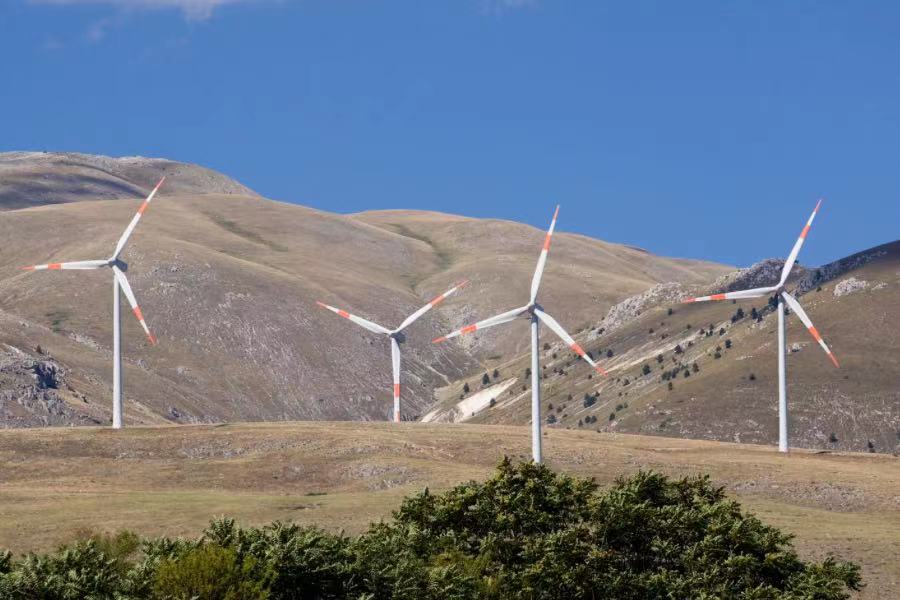Breeze may be turning in Goldwind’s favor, but global investors remain cautious

The world’s biggest wind power equipment maker, once China’s ‘green rush’ darling, is being abandoned by many of its big-name western investors
Key Takeaways:
- Goldwind’s sales fell 13% in the first quarter, extending a 9% decline for all of last year on weak demand and lingering supply chain disruptions
- Analysts expect the wind power equipment maker to rebound this year after China relaxed its Covid restrictions, but international investors remain cautious on the company
By Chen Ruzhen
After hitting the doldrums last year with its worst performance in a decade, 2023 is offering scant new breezes to fill the sails of Xinjiang Goldwind Science & Technology Co. Ltd. (2208.HK; 002202.SZ).
The world’s biggest wind turbine maker clocked its worst year in a decade in 2022 as Covid disrupted supply chains and cut-throat competition squeezed its margins. Its Hong Kong-listed shares hit a three-year low this week, as the company’s first-quarter results showed it has yet to feel any effects from a rebound triggered by China’s reopening since the start of the year.
Goldwind’s sales fell 12.8% year-on-year to 5.56 billion yuan ($805 million) in the first three months of 2023, while its net profit declined 2.4% to 1.23 billion yuan, according to the report. The company’s shares rose slightly after the report’s publication last week. But they have sagged since then, extending a slump that has seen them lose nearly 20% of their value since the start of the year.
Despite the gloom, some analysts sense the wind may finally be turning in the company’s favor as supply chains return to normal and global demand booms for renewable energy sources like solar and wind power.
Brokerages GF Securities, Western Securities and Huatai Securities all expect Goldwind’s net profit to jump roughly 40% in 2023 – reversing last year’s 36.1% slump. Their bullishness comes as the wheels of commerce start turning again, with component shipments no longer hampered by China’s tough Covid restrictions. That should allow Goldwind to return to firing on all cylinders to start delivering on its lengthy backlog of orders, many from overseas, analysts say.
Meanwhile, the company’s introduction of higher-end turbine products, as well as a rapidly expanding business of building and servicing wind farms, should allow Goldwind to steer clear of price wars by climbing up the value chain.
“Goldwind was under pressure last year from intensified competition and the pandemic,” Essence International analyst Zhu Ruize said in a report. He predicted a turning point this year, citing bumper orders, and new technologies that promise to repair the company’s earning power.
The company’s longer-term prospects look even more golden as countries around the world, including China, ramp up their investment in clean energy infrastructure to meet carbon neutrality pledges and fight climate change. The process is being hastened by the rising need for energy security amid geopolitical tensions, notably disruptions created by the Russia-Ukraine war.
Despite Goldwin’s growing role in reshaping China’s energy consumption patterns, attracting western investors – who once flocked to the company – has become more difficult. Headquartered in China’s northwestern Xinjiang region, Goldwind was accused late last year by Hong Kong Watch, a UK-based research group, of labor violations.
Such allegations, which Goldwindhas denied, could make western investors reluctant to put their money into the company, despite this year’s projected business rebound. Since last September, big names like BlackRock, Citigroup, and Singaporean wealth fund GIC have all sold down their stakes in the company’s Hong Kong-listed shares, while only JPMorgan has boosted its stake, according to Hong Kong Stock Exchange filings.
Turning point
Goldwind was hardly alone in slumping last year. Many of its peers also hit a lull as the global wind power industry posted its lowest growth in three years, hit by rising costs and shifting government policies. Although China fared better than the rest of the world, the country’s installation of new wind capacity declined from the previous two years, when developers rushed to meet government subsidy deadlines.
Goldwind’s 36.1% profit decline last year came on the back of a nearly 9% drop in revenue. Profit margins shrank to their thinnest level in 10 years as competition intensified in China, the world’s most fragmented wind market, where more than a dozen turbine makers compete for market share, driving down prices.
Auction prices for turbines dropped to as low as 1,780 yuan per KW on average last year, 14% lower than January’s price, according Guosheng Securities. Goldwind competes with domestic rivals such as Envision Energy Co. and Ming Yang Smart Energy Group (601615.SH), as well as global rival Vestas (VWS.CO) of Denmark.
Prospects are much brighter this year as China emerges from its Covid isolation. As the industry finds new footing and starts to rebound, GF Securities expects Goldwind’s net profit to jump 41% this year on the back of an 18% rise in sales.
The company’s big order backlog will be an important engine behind the rebound. At the end of March, Goldwind had record orders worth 29.59 GW, up 74% from a year earlier, most from overseas clients. Goldwind said in its 2022 report it “has not only made breakthroughs in key target markets such as Australia and Europe, but also expanded to emerging markets including Africa and Asia.”
That means Goldwind, which has edged out Vestas to become the world’s biggest turbine maker, could continue to grab market share from global rivals that also include Siemens Gamesa and General Electric (GE.US).
Despite its upbeat view, Goldwind’s Hong Kong-listed stock trades at a relatively low price-to-earnings (P/E) ratio of just 11, though its Shenzhen-listed A-shares trade significantly higher at 21. Such gaps are relatively common as Chinese investors tend to value companies higher than their western counterparts. The smaller Ming Yang, which is also an A-share company, is valued significantly lower with a P/E of just 9. Vestas lost money last year, but is expected to return to profitability this year.
Meanwhile, Goldwind is also diversifying its business mix to improve profitability. In 2022, revenue from its wind farm investment and development business jumped 22.2% to 6.9 billion yuan, fueling a gain in revenues from post-warranty services that typically generate higher margins than simple turbine making. Goldwind is also upgrading its technology to introduce more higher-margin turbines, according to Essence International.
Broader demand for wind turbines is expected to grow as Beijing moves towards its target of net zero-carbon emissions by 2060. Consultancy Wood Mackenzie estimates that China’s wind power market will grow 11% every year over the next 10 years.
But the Xinjiang connection could continue to weigh on Goldwind, especially among ESG-conscious investors that are more likely to scrutinize green energy companies for standards beyond just environmental protection. In its report critical of Goldwind, Hong Kong Watch co-founder Johnny Patterson said investing in such companies could reflect a lack of attention to the ‘social’ responsibilities that are the “S” in ESG.
To subscribe to Bamboo Works weekly free newsletter, click here






